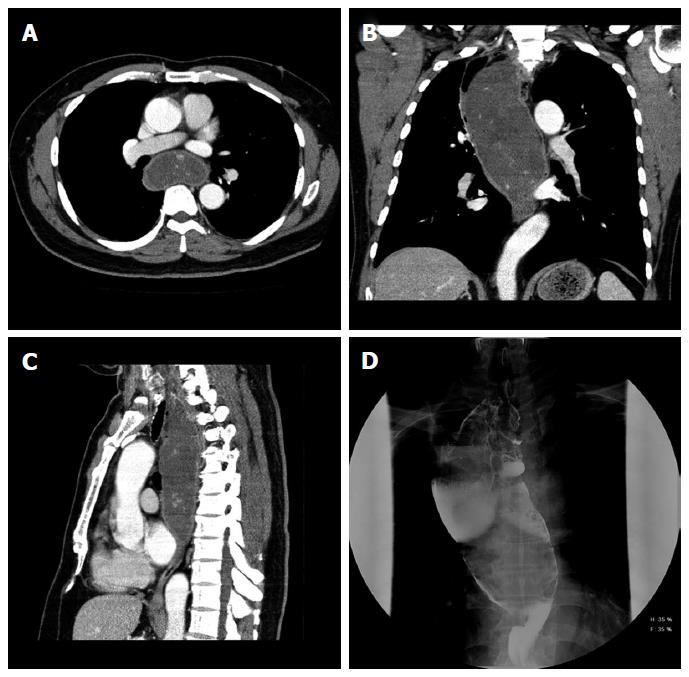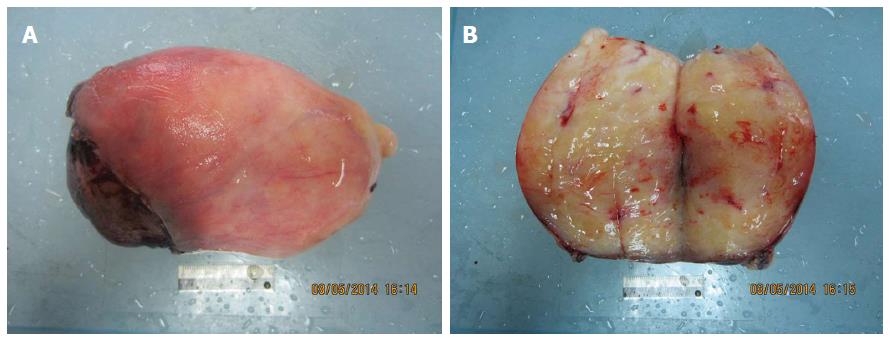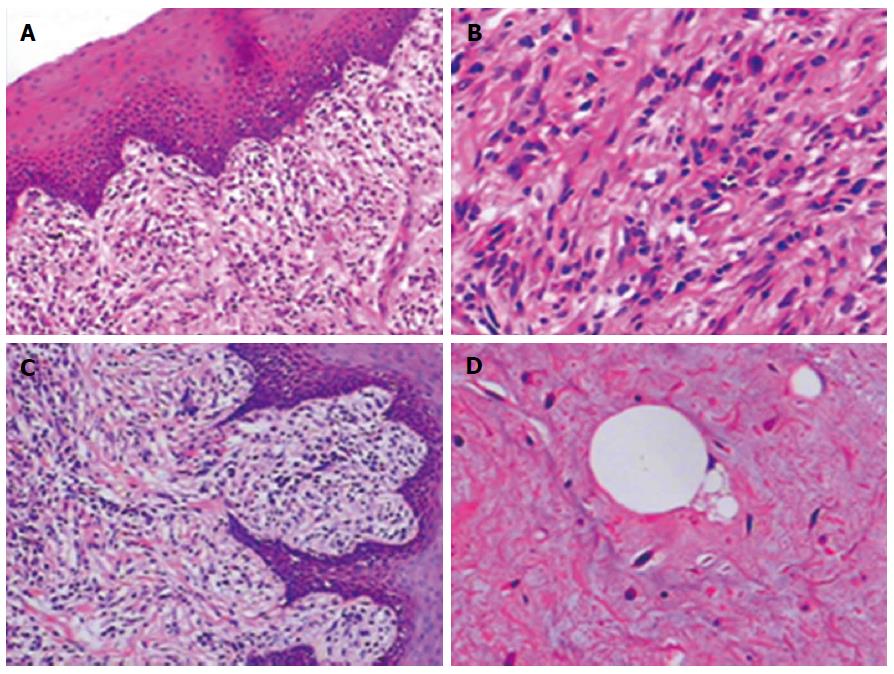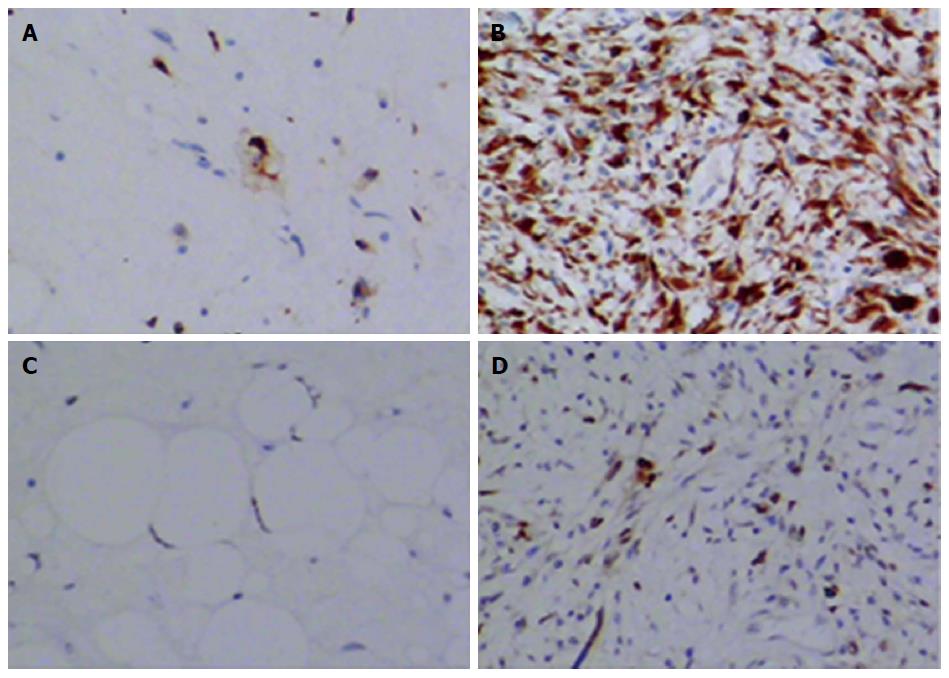Copyright
©The Author(s) 2015.
World J Gastroenterol. Sep 7, 2015; 21(33): 9827-9832
Published online Sep 7, 2015. doi: 10.3748/wjg.v21.i33.9827
Published online Sep 7, 2015. doi: 10.3748/wjg.v21.i33.9827
Figure 1 Radiological imaging of the esophageal liposarcoma.
A-C: Computed tomographic scan; D: Barium swallow.
Figure 2 Endoscopic results of the esophageal liposarcoma.
A large submucosal lesion or an extrinsic compression encompassing the esophageal lumen at 20 cm to 35 cm from the incisor teeth was revealed through a diagnostic flexible endoscopy. The remaining lower region of the esophagus and the gastro-esophageal junction was normal in appearance.
Figure 3 Surgical specimen of the esophageal liposarcoma.
Normal esophageal mucosa is shown covering the surface of the tumor. A yellow lobulated transmural mass invading the esophageal wall is visible at one surgical margin of the specimen.
Figure 4 Histological analysis reveals a well-differentiated myxoid esophageal liposarcoma with a dedifferentiated component.
Hematoxylin and eosin stain of paraffin-embedded sections highlighting histological features of the case. A: Myxoid tumor cells located just under normal squamous cell epithelia (magnification × 100); B: Spindle tumor cells (magnification × 200); C: Dedifferentiated component of the liposarcoma (magnification × 100); D: Lipoblast cells (magnification × 200).
Figure 5 CDK4 and MDM2 expression in the tumor as determined by immunohistochemistry.
Paraffin-embedded sections of the primary tumor are stained for A: CDK4 in a well-differentiated area (magnification × 200); B: CDK4 expression in a dedifferentiated area (magnification × 200); C: MDM2 in a well-differentiated area (magnification × 200); and D: MDM2 expression in a dedifferentiated area (magnification × 200).
- Citation: Lin ZC, Chang XZ, Huang XF, Zhang CL, Yu GS, Wu SY, Ye M, He JX. Giant liposarcoma of the esophagus: A case report. World J Gastroenterol 2015; 21(33): 9827-9832
- URL: https://www.wjgnet.com/1007-9327/full/v21/i33/9827.htm
- DOI: https://dx.doi.org/10.3748/wjg.v21.i33.9827













